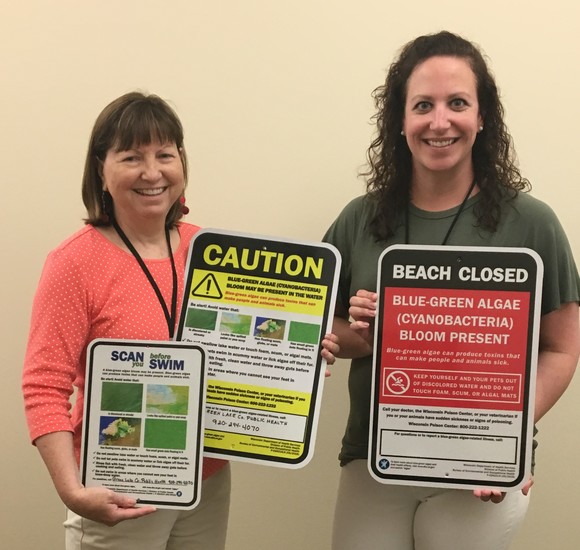 New Federal Recommendations for Two Cyanotoxins
On Thursday, June 6, the U.S. Environmental Protection Agency (EPA) issued Recommended Recreational Ambient Water Quality Criteria or Swimming Advisories for Two Cyanotoxins, Microcystins and Cylindrospermopsin in the Federal Register.
What are the new criteria?
EPA recommends that a swimming advisory be posted when cyanotoxin concentrations exceed 8 µg/L for microcystins and 15 µg/L for cylindrospermopsin. The recommended magnitude represents the concentration of microcystins or cylindrospermopsin that is not expected to result in adverse human health effects from short-term recreational exposure to toxins via incidental ingestion while swimming, based on exposure to young children. The adverse health effects include liver toxicity (for microcystins) and kidney toxicity (for cylindrospermopsin) and could result from exposures to waters containing elevated levels of these toxins.
 U.S. EPA recommended swimming advisory magnitude for cyanotoxins. EPA recommends the magnitude not be exceeded on any single day.
How did EPA develop these levels?
EPA derived these swimming advisory levels based on oral toxicity values for microcystins and cynlindrospermopsin, mean body weight of the population at highest risk (children ages 6–10), and the rate at which children incidentally ingest water while recreating. A major study contributing to the derivation of these levels, Dufour et al. (2017), analyzed water ingestion rates among 549 recreational swimmers.
What do these new levels mean for Wisconsin?
While Wisconsin statute requires local health agencies to close public beaches due to health hazards, there are currently no statewide testing or monitoring requirements specific to cyanobacteria or cyanotoxins. Historically and since the inception of the HABs Program in 2008, DPH and DNR have shared the 2003 World Health Organization (WHO) recommendations with local health and tribal agencies requesting assistance with interpreting health risks associated with blooms; these recommendations provide relative probabilities of adverse health effects based on cyanobacterial cell concentrations (see page 10 of the Wisconsin HAB Toolkit). While WHO guidelines were developed based on exposure risks to healthy adults, the new EPA guidelines were developed on exposure risks to the sub-population of swimmers at greatest risk of incidental ingestion (children ages 6-10).
Currently, Wisconsin state health and natural resource officials are discussing how to incorporate the new EPA criteria into existing HAB Program guidance and illness investigation protocols. The DPH HAB Program is interested in knowing if and how local health and tribal agencies plan to make use of the new EPA criteria. Please email the HAB Program with your thoughts, questions, and comments!
Guidance for Summer Camps Now Available!
To ensure recreational and educational camps in your area are knowledgeable of blue-green algae safety, please share this double-sided fact sheet with them.

In Case You Missed It
Aluminum blue-green algae signs are now available! Please email the HAB Program for ordering instructions.
 Green Lake County health officer, Kathy Munsey (left), and public health nurse Rachel Prellwitz (right), show off new blue-green algae beach signs.

This issue's sample post and photo:
A cooler spring in Wisconsin means a later-than-usual start to the algal bloom season, but blooms have been spotted in southern parts of the state where lakes are beginning to warm. Learn how you can stay safe from the harmful effects of blue-green algae: https://www.dhs.wisconsin.gov/water/bg-algae/defined.htm
|

Missed a past issue? Previous issues are available on our Resources for Health Professionals webpage.
Email us your burning questions! If others can benefit from hearing the answer to your question, we’ll feature it in a future issue.
Remember that we are always available for consultation on any HAB health-related issue by email or phone (608-266-1120).
|
|